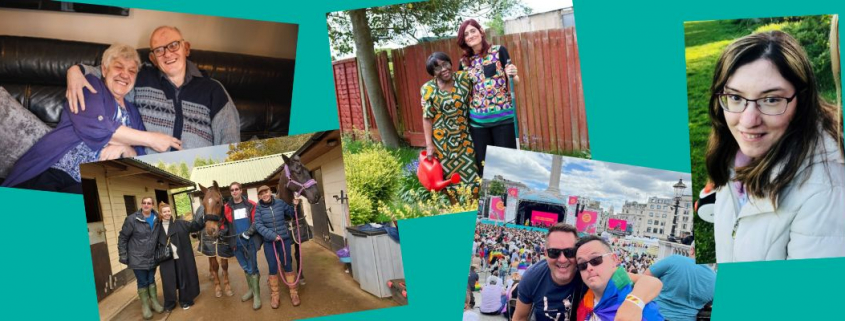Housing first, relationships second?
We all know that to get help from public services, people have to jump through hoops. We take it for granted. But why are those hoops there, and what happens if you take them away?
Most were not put there deliberately to make lives more difficult (refugee policy being one exception to that, where the ‘hostile environment’ aims to use misery as a deterrent to coming to the UK). They are usually put there to target services at those most in need, and to manage the risks and costs of providing support to people. That sounds like common sense, but can often result in rules which are dehumanising for people who need support, and self-defeating for services.
If your goal is for people to become ‘independent’, it may not be sensible to start by forcing them to think and talk repeatedly about what they can’t do, and to take all decision-making responsibilities from them, so that their main role is to ask you for help.
Sometimes those barriers to getting help start to demand more and more of people in crisis. Traditional approaches to housing and support demanded that people who were homeless demonstrate that they are ‘housing ready’ before being offered a tenancy. This could mean demonstrating they had tackled drink or drug misuse. But substance misuse can be a way of self-medicating to deal with the stress and trauma of being homeless, and the chaos of rough sleeping can make reducing substance misuse almost impossible: a Catch-22.
Housing First prioritises getting people who are labelled as having ‘complex needs’ into stable housing, on the basis that it will be more feasible to address any other issues once someone has the stability of a long-term home. It’s a global movement and the evidence is strong that it works better than alternatives, despite it discarding the ‘jump through hoops’ traditional approach. People are more likely to maintain their tenancy, reduce substance misuse, avoid reoffending and have improved mental health. The evidence is so strong that it should be the default response, as it is in other countries, but in England, Crisis found only short-term pilots, able to reach 350 people at any one time. It’s not clear that all of these follow the full Housing First model, which involves an open-ended offer of housing (which Crisis notes a pilot cannot do). It’s also not clear why an approach which is demonstrably more cost-effective, breaking a cycle of crisis and use of expensive crisis services, and in many cases helping people to move away from support services entirely, has not replaced approaches which don’t work as well.
It may be that hoop-jumping, and the implicit assumptions about the endless needs of people who seek support are so engrained into our public services that planners and leaders simply cannot contemplate that if they ‘open the floodgates’ they won’t drown.
The incentives to work in ways which help people succeed are not yet strong enough to overcome the often very healthy economics of providing services which, ultimately don’t work. So, we should embed Housing First as the default approach as soon as possible. But what then? The evidence that the approach works better is undeniable, but it doesn’t work for everyone. It relies on the individual being willing to enter the world of services, and often to move away from the place they currently live and the relationships they have there. And it is typically only offered to those with labels such as ‘complex needs’, which can in effect mean that people who don’t reach that threshold of need have to wait until their housing issues reach crisis point, before being addressed by a Housing First solution. These issues show that Housing First, a strengths-based and person-led solution, has not yet been able to escape the deficit-based and rule-bound public service system it exists within.
If we were to follow Housing First’s rights-based ethos to its conclusion, we would aim to offer housing not just to those in the deepest crisis, but to avert those crises. We would ensure that the support and housing which was offered did not slip back into being service-led and infantilising once people had accessed it, but embedded strengths-based thinking at every level. And we would see that a roof may be the first thing we all need to have any hope of living safely and well, but it’s not the only thing. What turns a house into our home is the life we are able to live and the relationships we form from there.
Our relationships – the real unpaid relationships we hope to have with partners, family and friends – are ultimately what keep us safe and well, so support and housing must be organised around and in support of those relationships, not take them away from them.
‘Housing First’ suggests everything else second. But we can offer more than one thing at once. At Mayday our coaches take a Relationship First approach: just as Housing First offers stable housing without strings attached, we offer open-ended supportive relationships unconditionally. That stability doesn’t open the floodgates: it gives an individual a stable base, ends the damaging cycle of case opening and case closing, and enables people to rebuild a life and relationships beyond services. If we combined Housing First and Relationship First we would have something really transformational.


